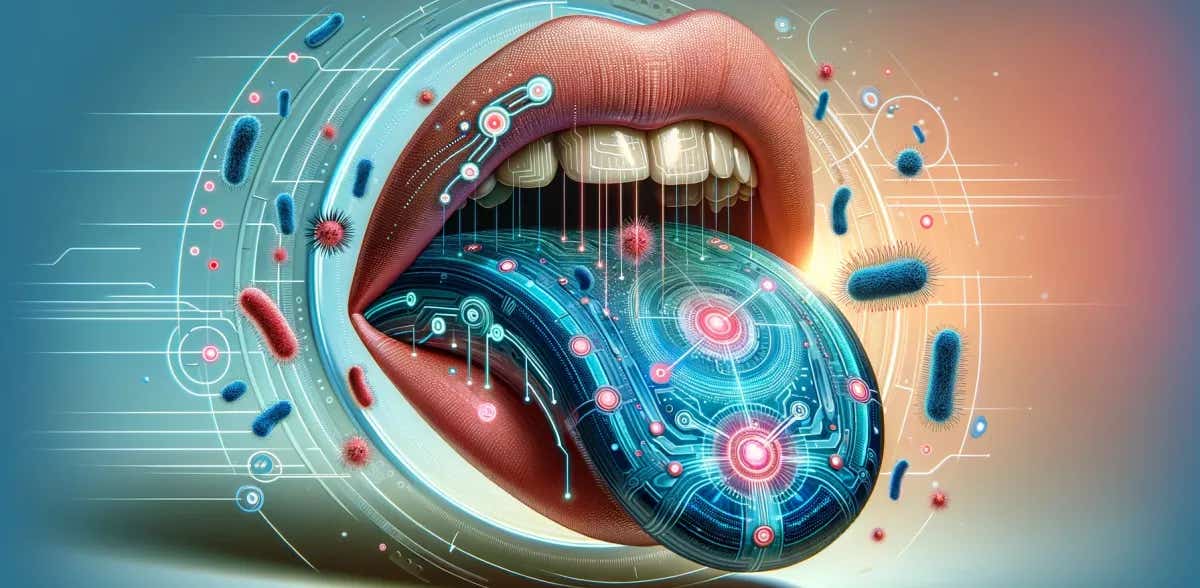New artificial mouth helps researchers understand oral processing of foods
Discover how artificial mouth technology is reshaping food science to meet the nutritional needs of ageing populations with groundbreaking precision.

Scientists have developed a 3D biomimetic artificial mouth to study food dynamics, paving the way for tailored nutrition solutions for older adults. (CREDIT: CC BY-SA 4.0)
The global population is set to increase by nearly 2 billion in the next three decades. This growth comes with a significant demographic shift: one in six individuals in developed economies will be over 65 years old.
For the food industry, this creates a pressing challenge—offering healthier, sustainable, and convenient food options that promote healthy ageing.
While grocery store shelves are packed with food products catering to infants and children, there is a glaring lack of options tailored to older adults. Up to 97% of older adults shop at mainstream supermarkets, yet many struggle to find foods that address their unique dietary needs.
These challenges are rooted in physiological changes associated with ageing, such as reduced appetite, diminished taste and aroma perception, and difficulties with chewing and swallowing. Factors like reduced saliva production, tooth loss, and sarcopenia—the age-related loss of muscle mass and strength—further complicate their eating experience.
The eating process involves complex interactions between food and the oral cavity. Liquids undergo rapid transformations, including heating and dilution, while solid foods require chewing to break down their structure. Saliva plays a critical role, lubricating the food bolus and enabling easier swallowing.
For older adults, these processes are often impaired, leading to prolonged oral processing and reduced food enjoyment. Foods designed for this demographic must prioritize ease of consumption while maintaining essential nutritional content.
Creating food products for older consumers requires a deep understanding of how physiological changes impact eating. Tailored feeding strategies, such as thickening liquids or altering food textures, can help address these challenges. Thickened liquids take longer to process orally, while textured foods often require more tongue-driven mechanical processing—especially for those with missing teeth or reduced oral strength.
The tongue, a critical player in food processing, typically exerts a maximum compressive force of about 70 kilopascals (kPa) against the palate. However, sarcopenia can weaken this force, further complicating oral processing.
Related Stories
For many older individuals, the tongue’s reduced functionality limits their food choices, making it essential for food products to accommodate these physiological changes.
In response to these challenges, researchers have developed bio-inspired and biomimetic systems to study oral processing. These systems replicate aspects of the human masticatory system, such as chewing forces and salivary lubrication.
However, most existing models fall short of capturing the dynamic movements and biomechanics of the human tongue. They lack the ability to simulate complex tongue motions, such as compression, rolling, and anterior-posterior movements, which are crucial for breaking down food and forming a swallowable bolus.
To address these gaps, researchers from INRAE and Japan’s Fujita Health University have unveiled a groundbreaking innovation: a 3D biomimetic artificial mouth. This advanced device features a pneumatic, multi-degree-of-freedom artificial tongue designed to mimic the mechanical properties and wettability of the human tongue.
Constructed from silicone, the artificial tongue replicates the elasticity, roughness, and surface papillae of its human counterpart. Three internal cavities, inflated and deflated by compressed air, enable lifelike movements based on ultrasound imaging of real tongues.
Published in the journal, Nature Scientific Reports, This artificial mouth was tested using three commercially available soft foods: a cream dessert, chocolate mousse, and chocolate fondant.
Researchers found that the food boli produced by the device closely resembled those formed in vivo by healthy participants. Key characteristics such as firmness, adhesion, cohesion, and viscosity were remarkably similar, demonstrating the artificial tongue’s ability to replicate realistic oral processing.
This innovative device offers unprecedented insights into the dynamics of food transformation in the mouth. By accurately simulating human oral processing, it provides a powerful tool for studying how foods behave under physiologically relevant conditions.
The findings could pave the way for designing foods that are not only easier to swallow but also more palatable and nutritious, addressing the specific needs of older adults.
Researchers have already begun work to incorporate mastication into future designs, aiming to simulate the full spectrum of oral processing. This advancement could revolutionize the food industry, enabling the creation of products that cater to diverse populations, including those with age-related challenges like reduced salivary secretion, tongue weakness, or poor coordination.
The potential applications of this technology extend beyond older adults. It could also benefit individuals with swallowing disorders, children with feeding difficulties, and even athletes seeking optimized nutrition.
As the global population continues to age, innovations like the 3D biomimetic artificial mouth will play a crucial role in meeting the evolving dietary needs of society.
Note: Materials provided above by The Brighter Side of News. Content may be edited for style and length.
Like these kind of feel good stories? Get The Brighter Side of News' newsletter.
Joshua Shavit
Science & Technology Writer | AI and Robotics Reporter
Joshua Shavit is a Los Angeles-based science and technology writer with a passion for exploring the breakthroughs shaping the future. As a contributor to The Brighter Side of News, he focuses on positive and transformative advancements in AI, technology, physics, engineering, robotics and space science. Joshua is currently working towards a Bachelor of Science in Business Administration at the University of California, Berkeley. He combines his academic background with a talent for storytelling, making complex scientific discoveries engaging and accessible. His work highlights the innovators behind the ideas, bringing readers closer to the people driving progress.



